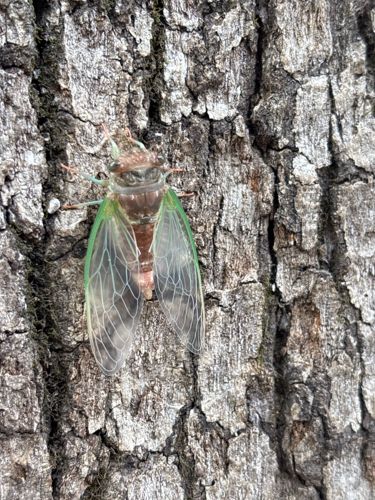Cicada
Scientific Name: Various species within the family Cicadidae (e.g., Neotibicen spp., Magicicada spp.)
Order & Family: Order: Hemiptera, Family: Cicadidae
Size: Typically 1 to 2.5 inches (2.5 to 6.5 cm) in length, but some species can be larger.

Natural Habitat
Cicadas are typically found in woody habitats, including forests, woodlands, orchards, and suburban areas with trees. Their presence is often associated with specific host tree species.
Diet & Feeding
Adult cicadas primarily feed on tree sap, which they extract using their piercing-sucking mouthparts. Cicada nymphs feed on the sap from tree roots while underground.
Behavior Patterns
Adult cicadas are known for their loud buzzing or clicking sounds, produced by males using tymbals on their abdomen to attract mates. They are generally active during the day. After mating, females lay eggs in slits they cut into tree branches. Once hatched, nymphs drop to the ground and burrow into the soil, where they can live for years, or even decades (for periodical cicadas), feeding on root sap. They then emerge as adults, typically in large numbers, to complete their life cycle.
Risks & Benefits
Risks: While harmless to humans (they do not bite or sting), large emergence of cicadas can cause minor damage to young trees or shrubs due to egg-laying slits. Their loud noise can also be bothersome. Benefits: Cicadas are an important part of the ecosystem. They serve as a food source for many animals, including birds, reptiles, and mammals. Their underground activity as nymphs can help aerate the soil, and when they emerge and die, they contribute nutrients to the soil.
Identified on: 8/19/2025